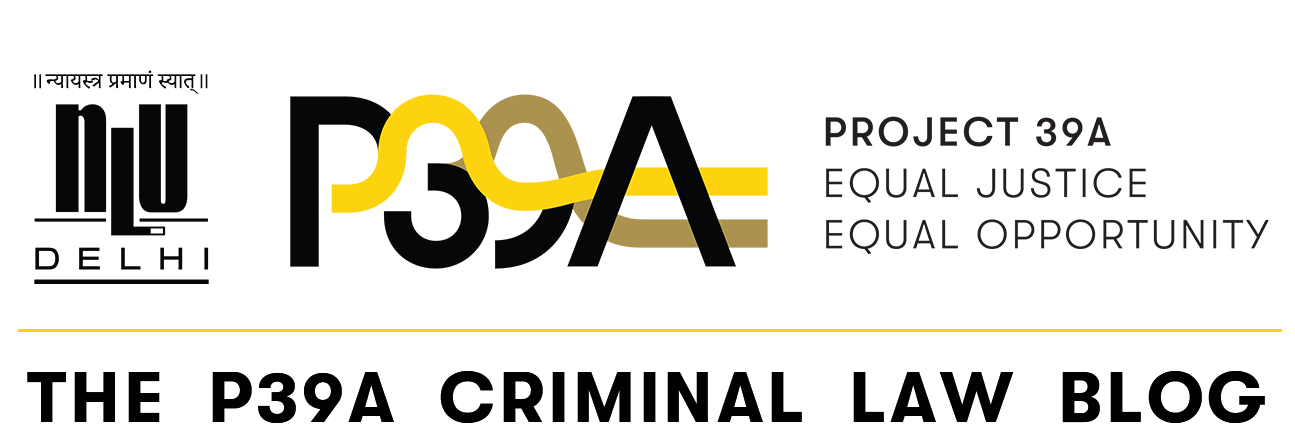Six years after being on death row a POCSO Special Court re-sentenced the accused to death in August 2022 in Anokhilal v. State of Madhya Pradesh. Convicted for child rape and murder case in 2013 [“Anokhilal I”] by the Khandwa POCSO court, in 2019, the Supreme Court struck down Anokhilal I on the grounds of fair trial violations of the accused. The Court remanded the case and ordered that the trial court must ensure “real and meaningful” legal aid to the accused in the retrial [“Anokhilal II”]. In this article, we analyse Anokhilal II and find it to be repeating the same mistakes as Anokhilal I. Only this time, the due process lapses have grave consequences as Anokhilal II has reinstated the death penalty on a prisoner who has already languished on death row. We argue that trial courts are duty-bound to ensure scrupulous adherence to due process requirements, not only for the specific violations observed in the remand but in all processes of the retrial.
The right to free legal aid is an essential ingredient of reasonable, fair and just procedure for a person accused of any offence. Accordingly, it is implicit under Article 21 of the Constitution of India. The state has the constitutional and statutory obligation to provide free legal services not only at the stage of trial but also at the stage when the accused is first produced before the magistrate or under circumstances of near-custodial interrogation.
When judges award the death penalty, how relevant is it for them to know about an accused person’s life, their social milieu, education, family circumstances and their personal traumas? What exactly does it take to obtain information about potential mitigating circumstances and how much time is needed to do so?
The top judicial minds of this country may need to deliberate on these questions in light of the September 19 Supreme Court judgment.
Forty-two years after Bachan Singh v. State of Punjab, on 19 September 2022, the three-judge bench of the Supreme Court of India referred a matter dealing with issues of capital sentencing to a Constitution Bench. In a series of articles, we break down what the Court intends to do, and how it should approach those issues to improve the quality of capital sentencing in India.
Set in place by a 42-year-old Supreme Court judgement, Indian law requires judges to consider a convict’s life story and the probability of reform in deciding life imprisonment or a death sentence. That ruling has been largely violated, as a study of trial-court judgements makes clear, because the law is fuzzy. Is it really possible to ensure no one is unlawfully sentenced to death? A Supreme Court Constitution bench will have to figure that out.
On September 19th, 2022, a 3-judge bench of the Supreme Court referred certain issues of death penalty sentencing to a larger constitutional bench. One of these issues relates to the amount of time required to collect and present mitigation evidence at the stage of sentencing. This issue is particularly important because, as evidenced by Project 39A’s study, sentencing persons to death on the same day as their conviction is pervasive across trial courts.
In the backdrop of an alarming rate of executions in Singapore in 2022, Kirsten gives the listeners a first-hand account. The Podcast discusses the anti-drug trafficking law in Singapore, the 2012 amendment and its problematic implementation, discriminatory use of the death penalty, and hefty fines on death penalty lawyers.
The Supreme Court in a recent order referred issues relating to capital sentencing in India to a Constitution bench. Unlike the dominant Supreme Court jurisprudence that has articulated inconsistent application of the Bachan Singh framework as the problem with capital sentencing, the referral order, in a markedly distinct approach, recognises the underdeveloped nature of the law.
The imagination of legal representation in capital cases is limited to lawyers. Mitigation, however, needs to be conducted by individuals trained in social work, sociology or psychology.
The Supreme Court has done well to acknowledge that capital punishment needs closer scrutiny and referring the matter to a five-judge bench. The problem that the Supreme Court’s reference to a Constitution Bench seeks to remedy is the need to achieve consistency on the requirements of a fair, meaningful and effective sentencing hearing


